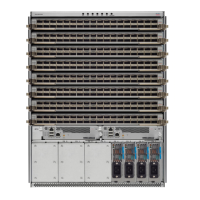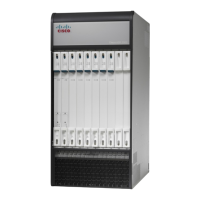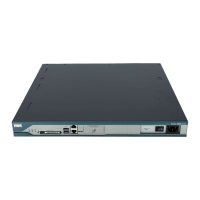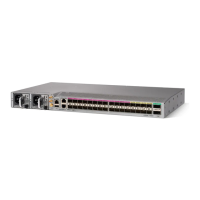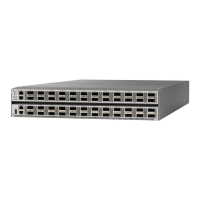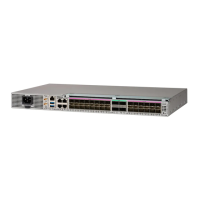The switch generates a syslog message when bit error threshold events are detected, even if the interface
is configured not to be disabled by bit-error threshold events.
Note
To disable the bit error threshold for an interface, perform this task:
Procedure
PurposeCommand or Action
Enters configuration mode.switch# configuration terminal
Step 1
Selects a Fibre Channel interface and enters interface
configuration mode.
switch(config)# interface fc slot/port
Step 2
If this is a QSFP+ GEM, the slot/port syntax
is slot/QSFP-module/port.
Note
Prevents the detection of bit error threshold events
from disabling the interface.
switch(config-if)# switchport ignore
bit-errors
Step 3
Prevents the detection of bit error threshold events
from enabling the interface.
switch(config-if)# no switchport
ignore bit-errors
Step 4
Configuring Buffer-to-Buffer Credits
Procedure
PurposeCommand or Action
Enters global configuration mode.switch# configure terminal
Step 1
Selects a Fibre Channel interface and enters interface
configuration mode.
switch(config)# interface fc
slot/port
Step 2
If this is a QSFP+ GEM, the slot/port syntax is
slot/QSFP-module/port.
Note
Applies the default operational value to the selected interface.
The operational value depends on the port mode.
switch(config-if)# switchport
fcrxbbcredit default
Step 3
The default values are assigned based on the port capabilities.
Assigns a buffer-to-buffer credit number to the selected interface
and optionally specifies if the port is operating in E, F, or TE
mode.
switch(config-if)# switchport
fcrxbbcredit number mode {E
| F | TE}
Step 4
If you specify E, F, or TE for the mode, the
buffer-to-buffer credit value is applicable only when
the port is set to that particular mode.
Note
Cisco Nexus 5500 Series NX-OS SAN Switching Configuration Guide, Release 7.x
OL-30895-01 21
Configuring Fibre Channel Interfaces
Configuring Fibre Channel Interfaces

